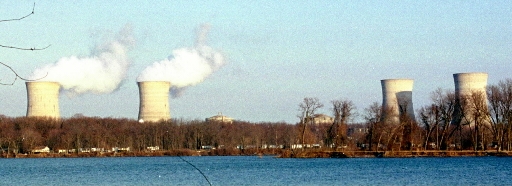1. Counting the Cost of Core Meltdown
Jan. 11, 2013
Chapter 1: The United States
Part 2: Three Mile Island--Ten Years After
Part 2: Three Mile Island--Ten Years After
It is over ten years since the worst commercial nuclear accident in the United States occurred at the Three Mile Island nuclear power plant in Pennsylvania on March 28, 1979. Following the accident it was seven years before the company publicly acknowledged that there had been a partial meltdown of the reactor core, and ten years before it became known that this meltdown had reached a level of fifty-two percent. Since the accident, the construction of additional atomic power facilities has been shelved. This may be interpreted as proof that not only has the myth of safety surrounding nuclear power generation been destroyed, but also that the myth that nuclear power is cheap appears to be on shaky ground.
1. Counting the Cost of Core Meltdown
Over 125 miles west of New York, in the middle of Pennsylvania's agricultural belt on the outskirts of Harrisburg, we found what we had been looking for. The four cooling towers looked just the same as they had ten years previously when the cameras of the world were focused on the unfolding saga at Three Mile Island. Our own cameras were taken from us at the gate before we entered the precincts of the plant.
The two northern towers were belching out steam—this was the Unit 1 reactor, which began operations in 1974. It had stood silent for seven years after the accident involving the Unit 2 reactor, but operations had begun again in 1986 after getting the all-clear from the Nuclear Regulatory Commission. The cooling towers for the Unit 2 reactor were no longer in operation. Beside them was a cylindrical building in which was housed the reactor that had sent the nearby residents into a panic in 1979. It glistened in the bright sunlight, giving no hint of the disaster which had taken place there.
We walked through a gate into Unit 2's barbed wire-enclosed compound, where our luggage was searched. We were not given any of the film badges generally used for detecting radiation. According to our guide, the public information manager for the plant, thirty thousand people had used badges there, and as zero readings were taken every time, the company had stopped issuing them. Of course, it also means that if for any reason someone was exposed to radiation, there would be no way of proving it.
Inside the control room for Unit 2 the core area was monitored on five television screens. This was where the core was uncovered just before dawn on March 28, 1979. As we watched, five workers in protective clothing stood above the core, removing the highly radioactive fuel rods, an operation which had been continuing for four years. A total of 150 tons of material was being removed from the reactor: 100 tons of fuel and 50 tons of parts and equipment. According to our guide, the work was due to be completed by fall 1989, with the decontamination of the core scheduled to be finished by spring the following year.
One headache for the staff at the plant is what to do with over two million gallons of contaminated water stored on the site. The current plan is to heat the waste water and reduce it to a more manageable volume of solids before disposing of it. "This operation will produce 1,020 curies of tritium--that's about one teaspoonful. There will be no effect on the atmosphere whatsoever," our guide assured us. The local residents have little confidence in the company's assurances, and there is fierce opposition to the plan from environmental groups.
As the cleanup operations continue at Three Mile Island, investigations are being carried out in an attempt to piece together a total picture of the accident. After three years of outright denials, in 1982 it was finally acknowledged that meltdown of the core had occurred. The first figure given as the percentage of core meltdown was 20%. This grew with each check, first to 35%, then 45%, until the final figure was put at 52%. Finally, in August 1989, cracks were found in the pressure tank, which proved that the reactor had really only been a hairsbreadth away from a disaster even more catastrophic than the accident in March 1979.
The construction cost of the Unit 2 reactor was $700 million. The cost of the cleanup operation will be $1 billion by the time it is finished. Taking into account the drop in share prices, the total loss to the company is likely to be in the region of $40 billion. We strained to look up at the tower, which may as well have been constructed of solid gold for what it had cost, and marveled at the mind-boggling price of nuclear accidents.







